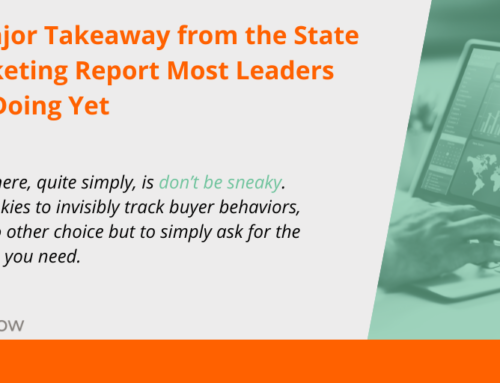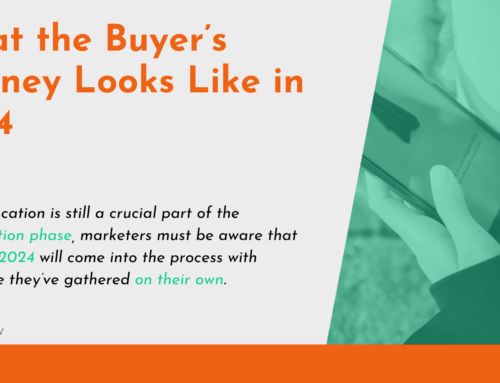
While changes in digital privacy have been well received by general consumers, they’ve made life a bit harder for marketers. The ability to track buyer behavior has been the cornerstone for providing relevant and personalized ads through various platforms, including PPC and social media.
It’s true that Apple and Google have certainly put a damper on marketing and advertising efforts. The combination of the privacy policies from two of the largest tech companies in the world mean marketers will need to face the challenges head on.
What Are the Challenges?
Acknowledging there will be challenges is the first step. Understanding what those specific challenges are comes next. It’s not just an inability to create ads that reach your buyers—it’s truly understanding your target audience based on their specific online behaviors. Take a look at what we mean.
Less Effective Ads
Yes, your ability to create effective ads will suffer. This is because your business won’t have the ability to reach, understand, and engage your buyers without fully understanding their browsing behavior. This means you’ll have to make different choices around your ad budgets, since you won’t have the same data informing your ad’s performance.
Basically, remember when advertising was about casting a wide net and seeing what you could catch rather than dangling a hook in front of a sure catch? We’re heading back toward that, unless marketers come up with creative solutions to the problem.
No Third-Party Data
The information about buyer behavior comes from third-party data, which is collected by an external entity with no connection to the users or the site. That data is then aggregated and sold to marketers to help create content with specific audiences in mind. This type of data is perfect for forecasting trends and making behavior predictions, so losing access to it is pretty devastating to marketers.
Gated Content
Without the ability to advertise to visitors—and to gather information about them to make money from third-party data—content providers have had to put more gates on their information than ever before. Subscription prices are necessary to recoup the losses from the inability to advertise. It’s not an especially customer-friendly solution, but many companies have had to institute new charges in order to continue driving revenue.
The big problem for marketers here is that, with a subscription model, those ads are no longer necessary for publications to survive. And without the ability to buy ad space, marketers lose crucial opportunities to reach new buyers.
What Are the Solutions?
Let’s consider each problem above and explore solutions for them. Then we’ll provide additional solutions that may help marketers stay ahead of future privacy changes.
Build Brand Communities
Without the ability to target strangers, marketers will need to settle for targeting good friends. By building brand communities through Facebook Groups, Instagram, Twitter, and TikTok—where fans of your brand can all talk to each other about how great you are—you get the benefit of a target group of people to share information about new products and services. You also get that most golden of benefits: word-of-mouth marketing.
Create First-Party Data
Communities are the first step to gathering information about your potential buyers. By simply asking people who visit your website to share their information with you, you could eventually build a powerful first-party database—filled with people who are thrilled to hear from you because they gave you permission to reach out.
Some ways to encourage consumers to share their information include:
- Offers for discounts in exchange for contact information
- A chance to review previous purchases
- Registering to receive information about new products before the general public
- A subscription to your newsletter, catalog, or sales emails
- Access to premium content, special events, prizes, etc.
Broaden Advertising Options
While many publications have turned to subscriptions models, there are still plenty of free entertainment options out there for consumers. Marketers can find these opportunities and potentially reach a whole new audience. Some possibilities include:
- Podcasts
- Interactive television
- Push notifications
- Influencer marketing
- Press releases
- Joint promotions
- Public speaking
- Publish a book
- Webinars and seminars
Produce Valuable, Quality Content
Regardless of how you get your content in front of potential buyers, there’s one major, crucial, very important (seriously, it’s imperative) consideration: it must be of good quality. Now, we’re not saying that you must have video produced by a Hollywood director or copy written by a bestselling author. By “quality,” we mean that the content you share should answer your buyers’ questions, be relevant to your brand, and be checked for mistakes before publishing.
When you share quality content, whether through influencer programs, paid advertising, or on your own website and social media, your potential buyers love consuming that content. That’s when it becomes valuable, not just for you but also for your prospects. That’s what keep you in their minds when they’re ready to make a purchase—not how many times they saw your ad on Facebook last week.
If you’d like some help navigating your marketing strategy through these privacy changes, don’t hesitate to reach out. We’re here for you.





